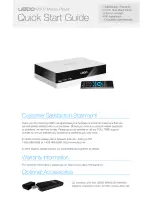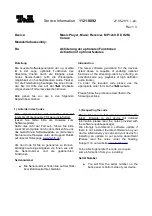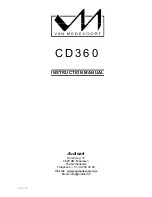
ENGLISH
29
MP3 CD features
MP3 stands for MPEG-1 Audio Layer 3 and arises from the Motion Pic-
ture Expert Group (MPEG) Standard which was developed for compres-
sing film data.
The MP3 format enables audio files to be saved on a computer with a
sound quality similar to that of a CD. This only requires approx. 10% of
the original data quantity. The standard encoding byte rate for MP3 files
is 128 kbps. Generally, the higher the byte rate of a an MP3 file, the
better the sound quality.
Most MP3 files in the Internet are encoded at 128 or 160 kbps. 160
kbps is considered CD quality.
MP3 files can be downloaded from the Internet and then burned onto a
CD-ROM disc. Your DVD player can read the ID3 tag from the file hea-
der, which contains information on title and artist, and display this in the
info menu/status display.
MP3 CDs contain sound recordings. They can be played in the normal
manner on an audio system. The digital signals transmitted during MP3
playback are PCM coded, regardless of the audio output setting. The
signals are output with the same data rate as the music source (possibili-
ties are: 32 kbps – 320 kbps, ideal: 128 kbps).
MP3 files can be organised into folders and subfolders, similar to files
within a PC.
PLAYBACK AUDIO/VIDEO FILES _____________
















































